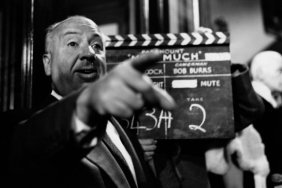Ken Watanabe as General Tadamichi Kuribayashi
Kazunari Ninomiya as Saigo
Shido Nakamura as Lieutenant Ito
Tsuyoshi Ihara as Baron Nishi
Ryo Kase as Shimizu
Yuki Matsuzaki as Nozaki
Hiroshi Watanabe
Takumi Bando as Captain Tanida
Nobumasa Sakagami as Admiral Ohsugi
Takashi Yamaguchi as Kashiwara
Nae Yuuki as Hanako
Directed by Clint Eastwood
Summary:
While it may be a bit slow for those unfamiliar with Japanese film sensibilities, Eastwood has achieved another impressive cinematic coup by making the type of classic war film we all knew he was capable of making.
Story:
As WWII comes to a head, a small army of Japanese soldiers must defend the island of Iwo Jima from an overwhelming invasion of American forces. Ordered to defend the island with their very lives, many of them spend the last days of their lives writing their last letters home as the morale is deteriorated by an early defeat.
Analysis:
After the disappointment that was “Flags of Our Fathers,” one would immediately think that “Letters From Iwo Jima” is a last-minute afterthought, but really, it’s the movie that Clint Eastwood should have made first. Besides showing the other side of the battle, one that few Americans have ever seen, it acts more as a prequel than a sequel, and though it might seem unfair to compare “Letters” to “Flags,” it’s almost impossible not to, because they’re meant to be flip sides of the same coin. In actuality, they’re two very different coins, the noticeable flaws in the first “minting” being corrected for the second.
With the American fleet descending on the island of Iwo Jima, the undermanned and undertrained Japanese troops are ordered to defend it with their lives. The original plan to dig trenches on the beach to defend the island is changed by the newly-arrived General Kuribayashi (Ken Watanabe), who suggests they dig caves in the mountains to have extra protection against the invading forces. Even with the new game plan, everyone realizes they’re sitting ducks on that island, especially when the mainland absolutely refuses to send reinforcements. The fall of Mt. Suribachi–as seen in “Flags”–does little to improve their morale, and a young private named Saigo barely survives his squadron’s mass suicide as we learn the conditions that led up to the bodies found by American troops in the first film.
There are many reasons why “Letters” is a better movie than “Flags,” but it helps that the story is told in a more linear fashion from the hours before the invasion, but then also covering soe of the ground we didn’t see in the first movie. The first hour is almost painfully slow at times–again mirroring classic Japanese cinema by focusing entirely on developing the characters through their dialogue and actions–but things pick up when Eastwood lets loose with a few well-placed war scenes, while never losing site of our main characters. As the title would suggest, the film includes a running narrative of the soldiers’ last letters home to their loved ones. Sure, it’s a bit of contrivance, but quite effective in setting the mood.
Much of the battle is seen through the eyes of Saigo, an idealistic young soldier played by J-Pop singer Kazunari Ninomiya, and his buddy Shimizu. There’s also Baron Nishi, an Olympic rider drafted into the army who has become a bit of a celebrity among the soldiers, and the benevolent General Kuribayashi (Ken Watanabe), who has spent so much time in the United States before the war that he’s often accused by his disrespectful underlings of being an American sympathizer. The unlikely relationship between Saigo and the General created by the latter repeatedly coming to the former’s aid makes up much of the crux of the narrative.
Some scenes seem a bit contrived due to Eastwood’s troubles masking his Hollywood sensibilities by including a few war movie tropes, like the soldier who shoots himself off camera, so that we can watch his troops’ reaction to the resounding gun shot. The movie does look good though, as cinematographer Tom Stern uses the same grey tone technique used for the flashback scenes in “Flags,” but having some of the same scenes from the other side do make them more invigorating.
The hopelessness of the Japanese soldiers’ situation gives the film an overall dour tone, but it also might create mixed feelings within those who think too much about the fact that the film is expecting American audiences to sympathize with “the enemy.” (It’s a bit like the underrated “Enemy at the Gates” in that sense.) It’s an immense credit to first time screenwriter Iris Yamashita’s excellent script that the characters are so fleshed-out that those worries don’t come up very much, and the lack of recognizable faces among the remarkable cast–Watanabe and Shido Nakamura being the exceptions–make the situations far more credible. Mostly, the movie’s success comes down to relative film newcomer Kazunari Ninomiya, who holds things together with an extremely likeable character, one who clearly isn’t the type of war hero stereotype we’ve seen in so many times in past war films.
The Bottom Line:
Eastwood takes classic war film traditions and gives them a unique slant by shifting the viewpoint to the other side, while showcasing great writing, an astounding Japanese cast, and yes, some impressive action sequences. “Letters” is likely to leave a powerful impact on anyone who thinks they know everything there is to know about WWII and the battle of Iwo Jima.
Letters From Iwo Jima opens on Wednesday, December 20 in New York, Los Angeles and San Francisco, and expands wider in January.








